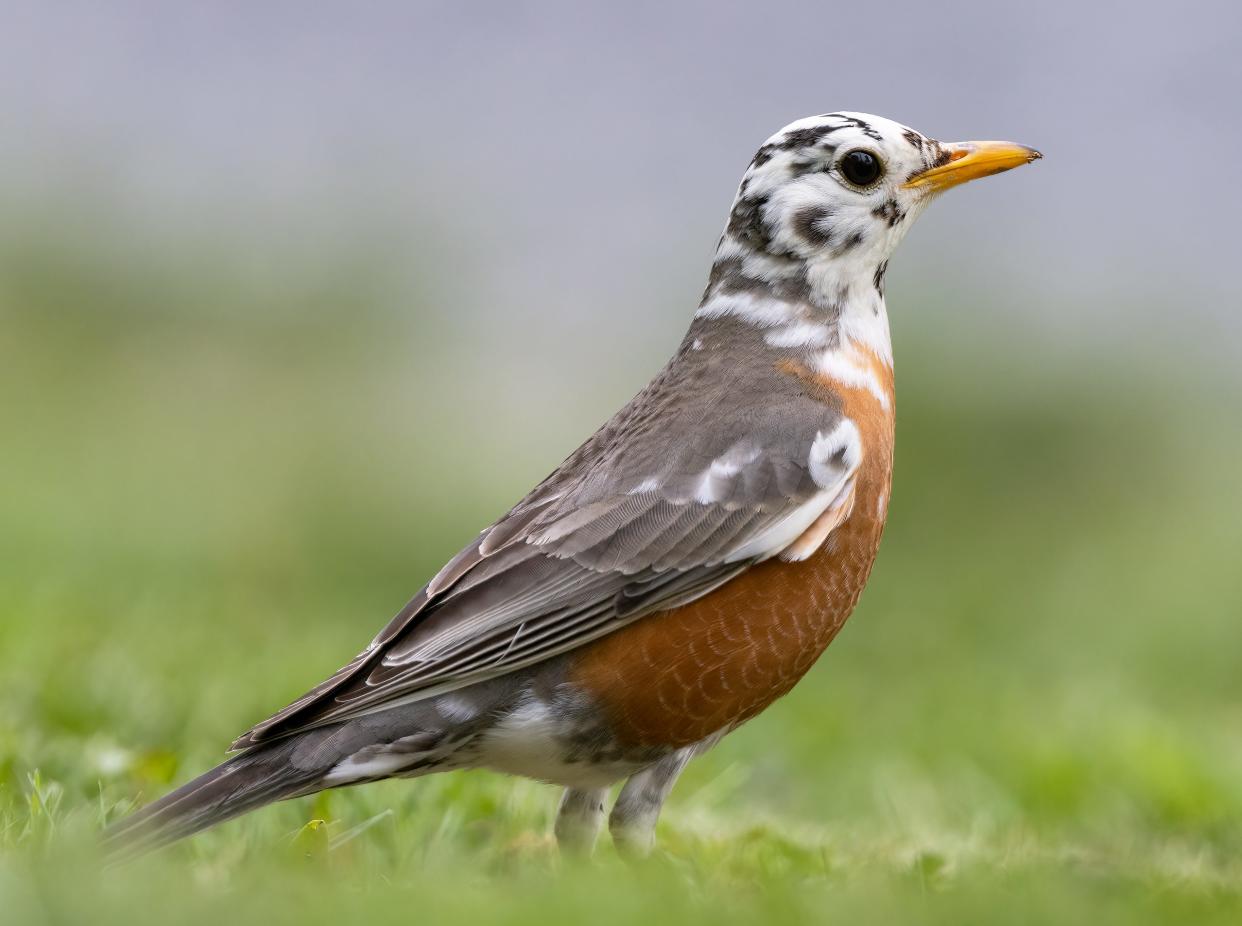Nature: Patchwork-patterned piebald robin with mostly white head an astonishing creature

The American robin is widespread and ubiquitous, the most common native bird in Ohio. Other than in winter —and sometimes even then! — it is likely to be one of the first birds encountered when stepping outside.
Male robins deliver a rich warbling carol that is a pervasive part of the avian soundscape. Everywhere one goes — urban park, backyard, the wilds of Shawnee State Forest, Lake Erie islands — there are robins. Over 4 million of them in Ohio. Nationwide, there are 370 million robins.
Nature: Tiny, endangered Walter's violet once found growing in Franklin County
Birds as abundant as the robin can quickly become background blur. We get bored with them, another humdrum robin running on the lawn. That’s a shame, as the American robin is one of our handsomest songbirds. Were they great rarities, birders would drop everything and come running if one made a showing.
Even I — an avowed fan of the burly extroverted thrush — must admit to ignoring robins on occasion. However, I did quite the opposite when the odd robin that is this column’s protagonist came to light.

Watching and waiting
In early May, I was in southern West Virginia helping to lead trips as part of the New River Birding & Nature Festival. This region is awash in interesting and uncommon birds — broad-winged hawks, yellow-billed cuckoos, over 30 warblers species including rare cerulean and Swainson’s warblers, scarlet tanagers, rose-breasted grosbeaks and many more.
Even the palette of thrushes, including Swainson's, gray-cheeked, and wood thrushes, and veery, out-exotic their familiar stablemate, the robin.
However, when longtime festival attendees Don and Karen Stose of Clayton, Ohio, showed me a photo they had taken of a very unusual robin I was all ears. The bird had appeared the day before at their campground near Fayetteville. I asked them to call or text if it appeared again, and I’d try to get there ASAP.
Nature: More than two dozen species spotted during 24-hour amphibian watch
Don rang the following day proclaiming, “It’s here!” Fortunately, we were just back from a field trip, and I made it to the campground in 10 minutes. The first bird I saw upon entering the facility was the gorgeous variegated bird, which promptly flew into a woodlot and out of photo range.
I sat with Don and Karen to wait him out. The allure of nearby turf grass was irresistible and the robin soon appeared on the lawn, posing like a supermodel.
It's in the genes
The robin's aberrant coloration is caused by a genetic condition known as leucism (loo-siz-em). Defects in pigment cells cause afflicted animals to become whitish, or more commonly, a mix of whitened zones along with normally pigmented areas. The latter are often referred to as "piebald," although the patchwork pattern is formally known as hypopigmentation. White-tailed deer are perhaps best-known in this region for producing piebald offspring.
Leucism should not be confused with albinism, a different genetic anomaly in which the eyes become pink. Leucistic animals retain normally colored eyes.
The leucistic robin was a stunning creature with its mostly white head and upper breast dappled with charcoal scalloping. Scattered white patches adorned other parts of its body. Even the most jaded robin-watcher would drop his or her jaw in amazement at this bird.
Nature: 'Mammals of Ohio' features facts, figures and more about Ohio's furry denizens
Manifestation of leucism is a numbers game. The more individuals in a species, the more likely it will manifest. Thus, leucistic robins, red-winged blackbirds, white-tailed deer and other abundant species appear with some regularity.
Other than possibly making the robin more noticeable to would-be predators, leucism probably doesn’t affect its well-being. Here’s hoping this robin survives, thrives and astonishes other observers.
Naturalist Jim McCormac writes a column for The Dispatch on the first, third and fifth Sundays of the month. He also writes about nature at www.jimmccormac.blogspot.com.
This article originally appeared on The Columbus Dispatch: Piebald robin known for white patches caused by lack of pigment

